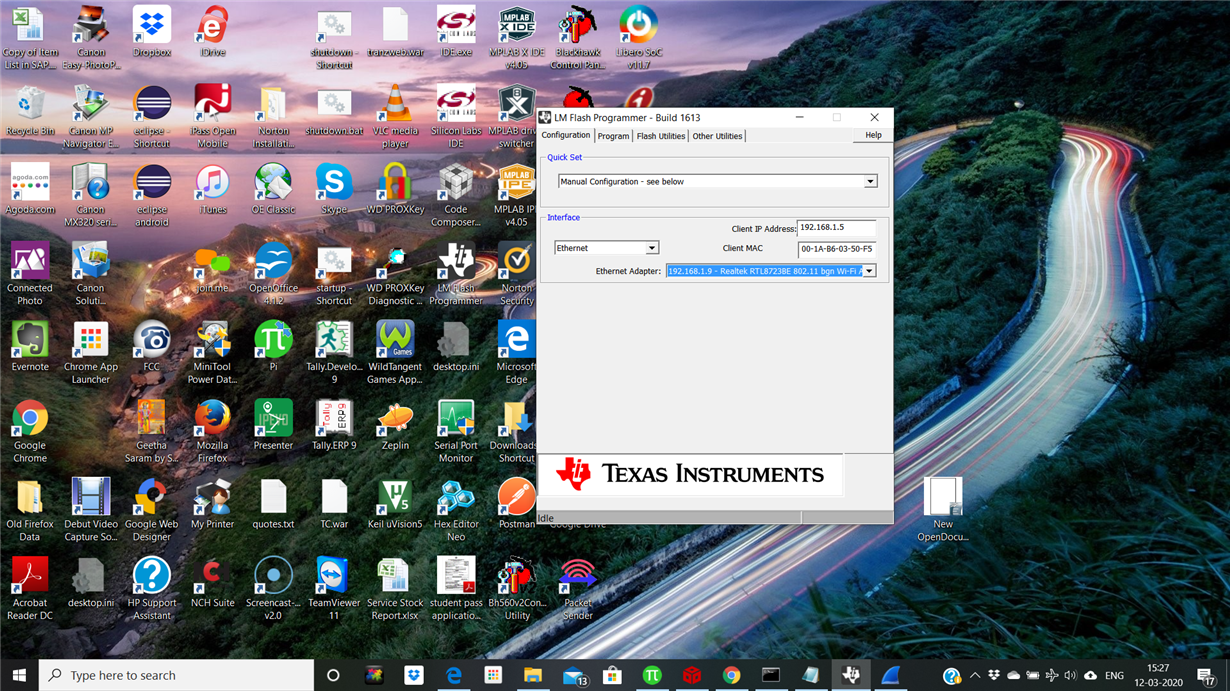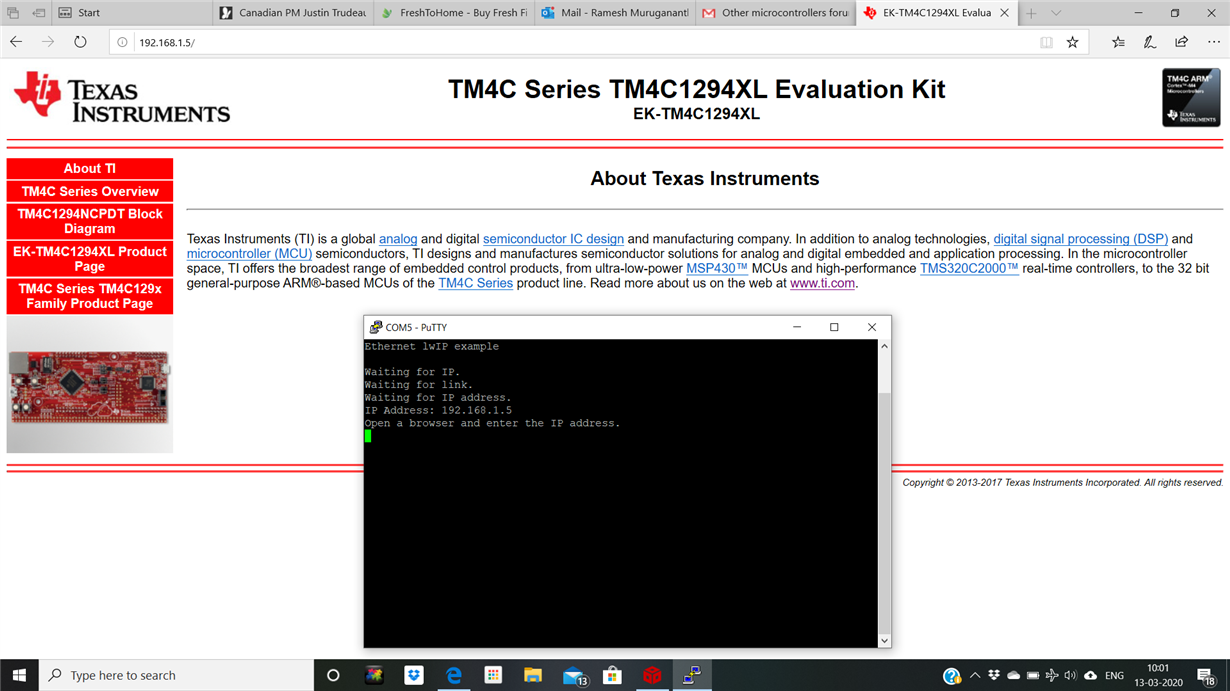Hello,
One of my project needs a field update of code through ethernet. So I took the examples from Tiva library - boot_emac_flash and boot_demo_emac_flash. Through LM Flash programmer I flashed the EK- tm4c1294xl launchpad. I flashed boot_emac_flash in location 0x0 and boot_demo_emac_flash in location 0x4000. Then I connected the launchpad to router( with ethernet switch). I got the launchpad address as 192.168.1.5 and laptop is connected to the router through wifi with ip 192.168.1.9. I configured the lm flash programmer as shown in the attache screenshot. Then tried to program. But lm flash displayed - 'attempting to connect'. In wireshork I could not see any communication to launchpad.
Could you help
Regards,
Ramesh




